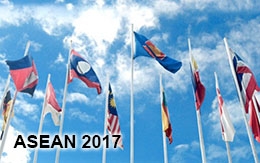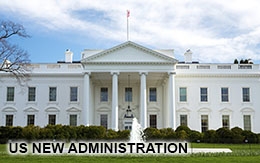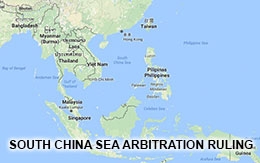Vietnam’s increasing Naval Diplomacy and future Possibilities
Vietnam is advancing Naval Diplomacy, and it could do much more.
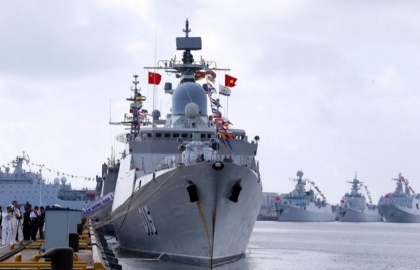
Even though Vietnam's military expenditure in terms of percentage to GDP has stayed around 2.2%, the nominal value has been steadily increasing. The main reason is that Vietnam is one of the world's fastest growing economies. In 2015, Vietnam’s military spending was US$4.5bn and in 2018 it reached US$5.5bn, falling only behind Thailand, Indonesia and Singapore in ASEAN - all more advanced economies. In the naval realm, 6 Submarines, 4 Frigates, 8 Corvettes and a number of Coast Guard vessels have been acquired in the last 15 years - a build up that has been extensively noted. Yet for the most part, these acquisitions are brought up in a pessimistic, more eye-catching context of territorial disputes in the South China Sea (SCS), rather than a positive one of potential cooperation and future diplomatic applications. Instead of discussing the usual SCS themes, such as potential value of the trade routes and natural resources, or China’s ambiguous and unlawful nine-dash claim that goes against UNCLOS, this paper will focus on an overlooked concept of Naval Diplomacy and its potential benefits; how Vietnam has utilized the concept so far; and what more could be done diplomatically in the maritime sphere to advance Vietnam’s image as a responsible, cooperative, pro-active and friendly maritime stakeholder, something the country strives for with its foreign policy of independence and diversification.
Gunboat diplomacy, a specific type of naval diplomacy that is more aggressive, overt and more often than not is targeted at weaker states by Great Powers, has been prevalent for centuries. The practice has not completely faded away yet. In the aftermath of 2010 tensions between North and South Korea, Washington sent the USS George Washington together with its escorts as what was described as “carrier diplomacy” and “gunboat diplomacy 21st Century-style” by some observers. However, relatively stable global order and rising capabilities of middle powers has made Naval Diplomacy a more accessible and neutral concept that is not limited to Great Powers. Naval Diplomacy, contrary to gunboat diplomacy, puts a more positive spin on the concept and it represents cooperation rather than intimidation. A growing number of states are increasingly practicing Naval Diplomacy and projecting their soft power in the maritime theater one way or another.
If properly utilized, it can advance states’ prestige with even a limited use of naval assets and can be useful not just in the time of war, but also, and perhaps even more so, in the time of peace. Activities range from bilateral port calls and “goodwill visits” to multilateral counter-piracy, disaster-relief operations, International Fleet Reviews (IFR) and others. The use of naval forces can support countries’ foreign policy, indicate commitments, and even make a stance on specific issues, albeit often indirectly. For example, foreign ships visiting Vietnam must sail through the SCS, and can choose to make a statement of sailing through international waters based on UNCLOS, effectively conducting a FONOP. Additionally, visiting ships, such as the USS Carl Vinson in March 2018 and USS Theodore Roosevelt in March 2020, can be considered as indications of closer relationships and defence cooperation, and can deter potential military adventurism. In a nutshell, bilateral and multilateral interactions can build relationships and promote trust as well as cooperation between naval forces. Fleet reviews especially, historically battlegrounds of egos, morphed into multinational events of collaboration and cooperation. Vietnam, as a middle power with high stakes in keeping the maritime theater “safe, friendly and strictly controlled”, in other words managed by international law, has a lot to gain, and little to lose, from utilizing the concept of Naval Diplomacy. The concept also particularly fits Vietnamese foreign policy objective of independence. If practiced correctly, Naval Diplomacy is primarily seen as a Soft Power tool rather than something assertive or aggressive. States that are often far from benign with each other, such as the US and China, manage to put the differences aside and exercise together with hopes of building trust and easing existing tensions. Hospital Ships especially are Soft Power vessels that are virtually incapable of receiving criticisms given that their purpose is of humanitarian nature only.
The visits by US aircraft carriers to Vietnam have been on the spotlight, and rightfully so. However less attention is given to the fact that the overall amount of foreign vessels visiting the country has been steadily increasing for years. Even though Vietnam is consistent with its three-no policy of no military alliances, no foreign troops stationed on Vietnamese soil, and no partnering with a foreign power to combat another, it also, to put it in their terms, is “willing to welcome” foreign vessels of navies, coast guards and border patrols for port visits and even repairs or to replenish logistic and technical supplies. Even though this willingness was officially reiterated in 2019 Defense White Paper, foreign vessel visits have sharply increased prior to the year of 2019.
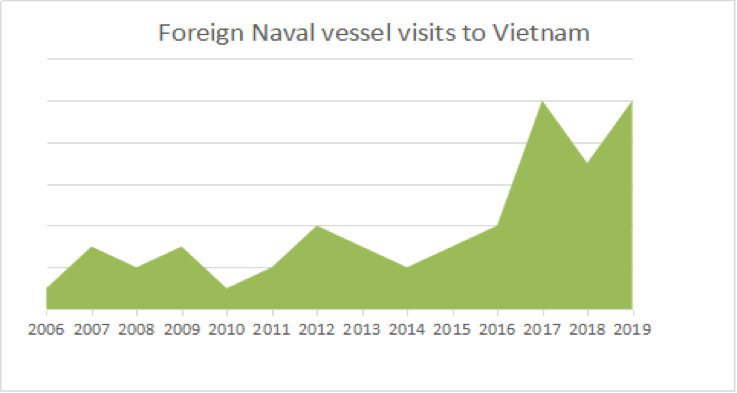
*Based on QDND.vn (People’s Army Newspaper) Reporting
As long as Vietnam does not prioritize some states over the others, the risks of breaking the independent clause, and in turn getting trapped in a great power rivalry, are not of concern. Japan, South Korea, Australia, France, India, China, New Zealand, the US and many others have had visits to a number of ports in Vietnam, indicating that the country does not discriminate. Japan’s first submarine visit to the country commenced in September 2018, and first-ever visit by Canadian navy ships happened in June 2019. To reciprocate, Vietnam People’s Navy also conducts visit, albeit in a more limited capacity. Primarily ASEAN member states, China, India and Japan are at the receiving end, and often the visits are conducted by coast guard vessels, or the Le Quy Don - Vietnam Naval Academy’s Sailing Ship used for training. Vietnam did participate in a number of recent IFR’s, namely the 2016 IFR in India and IFRs in China and Russia in 2019, showing that it is capable and willing to deploy its naval assets beyond the territorial waters for diplomatic purposes. Additionally, Vietnam was set to host International Maritime Review (IMR 2020), ASEAN Multilateral Naval Exercise (AMNEX-2 2020), 14th ASEAN Naval Chiefs’ Meeting (ANCM-14) and Multilateral Naval Exercise Komodo (MNEK 2020) in 2020. Due to the issues caused by the ongoing COVID19 pandemic, the future of these events is still unclear. They have supposedly been postponed to take place in September. However depending on how the pandemic develops, the events might take without parades on the streets, or be cancelled outright and only ANCM-14 would commence. Enthusiasm not just to participate in, but also organize, events in the naval theater clearly show Vietnam’s desire to utilize Naval Diplomacy to the fullest, thus it is important to look at areas where Vietnam could engage even more.
The Framework Participation Agreement (FPA) between Vietnam and the European Union (EU) signed in 2019 has made it possible for the country to participate and contribute to EU’s Common Security and Defence (CSDP) missions and operations. The 19th of its kind, and only 4th that has been concluded in the Asia Pacific after New Zealand, Australia and the Republic of Korea, the agreement opened up new opportunities for Vietnam to portray itself as a cooperative and pro-active power through land and maritime missions. The EU currently runs multiple civilian and military operations with at least 5000 personnel deployed around the globe, and at least two, EU NAVFOR Atalanta and EUCAP Nestor, partake in the maritime theater relevant for Vietnam - the Indian Ocean, - home to major sea routes connecting Europe with Asia. In terms of bilateral trade, the EU is the 4th largest trading partner of Vietnam, and in 2019 the block was the second most important overseas market for Vietnamese products, constituting 16% of the country’s global exports. The trade routes are to become even more paramount since the EU, just a few months ago, on February 12, ratified the EU-Vietnam Free Trade Agreement and EU Investment Protection Agreement, and Vietnam National Assembly is expected to ratify the agreements this month. The FTA is said to increase Vietnam’s exports to the EU by 42.7% by 2025, and EU’s exports to Vietnam by 29% by 2035. For Vietnam, maritime piracy is a “perpetual challenge” that threatens national defence and security of the country. In order to contribute to the safety of the Indian Ocean trade routes and at the same time put Vietnam People’s Navy on the spotlight, the leadership should consider participation in EU NAVFOR Atalanta. Deploying naval assets, or in a more limited capacity, sending an Autonomous Vessel Protection Detachment (AVPD) to protect the World Food Programme (WFP) ship, or contributing staff to OHQ in Rota in Spain would work. From EU’s Asia Pacific FPA signatories, so far only Republic of Korea has contributed a warship to the operation and New Zealand provided a Lockheed P-3 Orion Maritime Surveillance Aircraft, potentially making even a limited Vietnamese contribution worth of positive publicity.
In its neighbourhood, Vietnam already has a Naval Diplomacy tool in its possession which could be used to advance its image - the hospital ship Khanh Hoa 01, coded HQ-561. This kind of ship is primarily the tool of larger powers to generate soft power abroad. By launching one on April 26 2012, Vietnam joined an exclusive club of nations that include the US, Russia, China, and to a lesser extent Indonesia, Brazil, and India. USNS Comfort and Mercy are regularly used by the US Navy, with the latter one sailing through the Indo-Pacific annually as part of the Pacific Partnership mission as what is sometimes labeled as the US government’s most visible soft power tools. China launched the “Peace Ark” in 2007, and has had some deployments, namely around the Caribbean as part of its “Harmonious Mission 2011”, and to assist Philippines, albeit with criticisms of doing so too late to make the most of it, after Typhoon Haiyan in 2013.= The “Peace Ark” also regularly participates in the RIMPAC exercises alongside USNS Mercy. Vietnam did participate in all of the Komodo (MNEK) exercises since its establishment in 2014 by sending the Khanh Hoa 01 Hospital Ship. However, when it comes to utilizing Naval Diplomacy to the fullest, there is room for improvement. After observing the Rim of the Pacific (RIMPAC) exercises in 2012 and 2016, for the first time Vietnam will be a participant, however only naval officers will be sent and not the ship. Granted, it is not all up to Vietnam, as the country participates through an invitation from the Commander of the US Navy’s Pacific Fleet. Having said that, given the improvements in defence cooperation between the two countries, the multiple naval visits by US to Vietnam, including 2 Aircraft Carriers, and the fact China has already participated in such capacity, the possibility should be there. Besides participating in exercises, Khanh Hoa 01 regular mandate could also be extended. Currently, its main purpose is to support fishermen around Truong Sa (Spratly) district as part of Khanh Hoa province in the south central coast of the country. Opportunities where Vietnam could utilize Khanh Hoa 01 in a larger capacity include, but are not limited to:
- expanding the mandate of the ship to include support to fishermen from neighbouring states;
- deploying the ship in cases when Humanitarian and/or Disaster Relief is necessary;
- or visiting countries via a dedicated mission to provide certain health care services to underprivileged communities, as Indonesia has done so for the first time in 2016.
Clearly Vietnam has the necessary tools needed to improve its image on a regional or even global scale through Naval Diplomacy. It regularly participates in a variety of naval activities, and is also willing to organize them. It enthusiastically welcomes foreign navies to visit the country through “good will” visits, port calls and even repair and replenishment are on the table. The FTA between Vietnam and EU will make the Indian Ocean trading routes even more important, and since maritime piracy is considered to be a never-ending challenge for the country. Contributing to Operation Atlanta would be beneficial in multiple ways. It would allow Vietnam to befriend, collaborate and train with European navies, contribute to the safety of Indian Ocean trade routes, and also raise the country’s image in a global arena. Additionally, adjusting its Hospital Ship’s mandate to serve not just domestic, but also regional, needs, and/or organizing medical missions abroad, would make a better use of an asset that currently few states have in their disposal.
Tomas Jevsejevas (@tjevsejevas) is a researcher who works on issues related to Indo-Pacific Security, China and EU-Asia relations.
Click here for pdf file.


